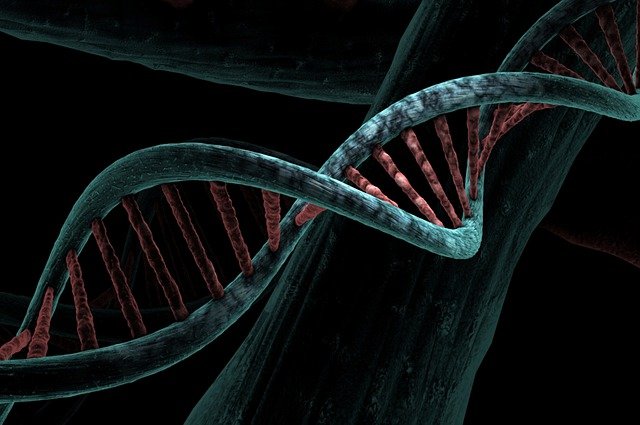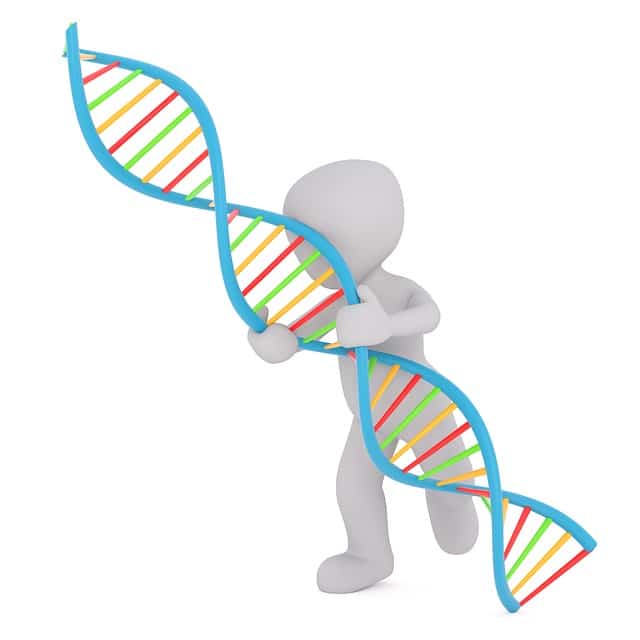
DNA is the acronym for deoxyribonucleic acid.
DNA is an acronym that corresponds to deoxyribonucleic acid : the biopolymer that houses the data for protein synthesis and that makes up the genetic material that cells have.
It can be said that DNA presents the genetic information that living beings use to function. This nucleic acid also makes it possible for data to be transmitted through inheritance .
DNA is often compared to a code , since it acts as a guide with instructions for the construction of the rest of the components of the cells. Each segment of DNA that contains this data is called a gene .
DNA components
Being a biopolymer, DNA is made up of multiple simple units that are related to each other, forming a chain. The different elements that make up DNA are nucleotides , made up of a phosphate group , a nitrogenous base and a sugar .
Nucleotides are distinguished from each other according to the nitrogenous base, which can be guanine , cytosine , thymine or adenine . Depending on how these bases are arranged in the DNA chain , the coding of genetic data occurs.
Using the data contained in DNA requires that the information be first copied into ribonucleic acid ( RNA ). The copying is known as transcription. RNA molecules are analyzed in the nucleus of cells and then leave the cytoplasm for use.
Scientific research on DNA allows the development of medical treatments and the modification of microorganisms, among many other issues.

DNA contains the genetic information of the individual.
Diseases linked to this biopolymer
There are various types of diseases related to DNA. These are so-called genetic diseases , that is, those that occur as a result of some DNA alteration. In general, they do not occur due to having acquired parental characteristics, that is, they are not related to the genes of the parents.
Within this group we can find the following:
* monogenic diseases : these are those that occur due to different DNA alterations or mutations in only one gene;
* polygenic diseases : they occur as a result of mutations in more than one gene, usually on several chromosomes, in combination with various environmental factors;
* chromosomal diseases : they occur as a consequence of certain alterations in the chromosomes. One of the best known at a popular level is Down Syndrome , characterized by the existence of an extra copy of chromosome 21;
* Mitochondrial diseases : these disorders are generated when the mitochondrial DNA suffers alteration, and can cause problems in various parts of the body, given that the mitochondria of the human body have their own DNA. In this case, only women can transfer diseases.
Other DNA-associated disorders
One of the most common genetic diseases is cystic fibrosis , which tends to especially affect white individuals. Broadly speaking, it is characterized by the absence of a certain protein and the inability of the body to restrict the chloride balance. Among its symptoms are lung infections and reproductive disorders. One of its peculiarities is that it only occurs when both parents are carriers .
On the other hand, there is Huntington's disease (which usually appears simply with its acronym, HD ). It causes the cells of the central nervous system and the brain to degenerate , with terrible consequences, such as difficulties swallowing, inability to control body movement, changes in behavior, memory loss, and difficulty maintaining balance and expressing oneself. .
Duchenne muscular dystrophy is another DNA-related disease. Generally, it manifests itself before 6 years of age, and is characterized by muscle weakness and fatigue, first in the legs and then in the rest of the body, leaving those affected confined to a wheelchair at the beginning of their life. adolescence.
